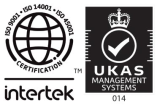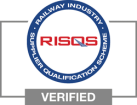Instructions for the safe use of: Mobile Gantries
Please note that these instructions are not exhaustive; and they may not be appropriate for all pieces of equipment or applications. Always refer to the manufacturers instructions for your specific equipment. if you are still unsure always consult an appropriately qualified individual.
By clicking here you can view all of the Mobile Gantries we offer in our online shop.
When Using Mobile Gantries Always:
- Store and handle mobile gantries correctly.
- Inspect the gantry, block and accessories before use and before placing into storage.
- Ensure the surface on which the gantry is placed is level, even and capable of taking the imposed loads.
- Position the gantry so that the lifting appliance is directly over the load.
- Where fitted, apply brakes, parking jacks and wheel locks before attempting to raise the load.
- Disconnect power supplies etc before attempting to move the gantry to a new position.
When Using Mobile Gantries Never:
- Attempt to move a gantry whilst under load.
- Use a vehicle, winch etc to tow a gantry.
- Allow the load to swing unduly or in an uncontrolled manner.
- Rotate loads unless the centre of gravity will remain under the centre line of the runway beam.
- Allow persons to pass under suspended loads.
- Place ladders or climb on unrestrained gantries.
Selecting the Correct Gantry
Mobile gantries are available in a range of capacities, sizes and design options. Select the gantry to be used and plan the lift taking the following into account:
- Type of gantry - goal post, A frame, fold away, adjustable height, self erecting.
- Capacity - runway height and length.
- Type of bracing - internal, external, boxed or spliced.
- Type of block and trolley to be used.
- The need for brakes, wheel locks or parking jacks.
NOTE: Mobile gantries are not intended for movement under load and are portable only to allow their positioning over the load. Special gantries can be made suitable for movement under load, in which case the suppliers specific instructions for safe use must be sought and followed.
Storing and Handling Mobile Gantries
- Never return damaged gantries to storage. They should be dry, clean and protected from corrosion.
- Gantries left erected for storage should be positioned so as not to present a hazard to persons, goods, vehicles etc that may be in the area. Where fitted, jacks should be used to take the weight off the castors and prevent movement, otherwise brakes applied or other steps taken to restrain the gantry.
- Gantries which are dismantled for storage should be packed and stored in such a way that all of the components and
- structural members are kept together safe from loss or incorrect substitution.
Installing and Commissioning
Follow the specific instructions for erection issued by the supplier as these will vary with the design. Never force or hammer bolts, locking pins etc into place. Damaged or lost bolts, nuts washers etc must only be replaced with identical items of the same grade and size. Never place ladders or climb on unrestrained gantries.
Using Mobile Gantries Safely
- Do not use defective gantries, blocks or accessories.
- Inspect the gantry to ensure it is correctly erected and that all bolts, pins etc are correctly in place.
- Position the gantry carefully aligning the runway track with the direction of load travel. The block hook must be directly over the centre of gravity of the load. The standing area must be level and capable of sustaining the imposed loads. Where necessary use floor plates to achieve this. Caution must be exercised to avoid hidden dangers such as buried cables, pipes etc.
- Ensure the gantry remains stable during lifting operations. If fitted, jacks should be in contact with the floor, brakes applied or wheel locks in position.
- Do not attempt to move a gantry whilst under load.
- Avoid swinging loads. The centre of gravity of the load should always be under the runway centre line.
- Ensure power supply leads etc are disconnected before moving the gantry to a new position.
In-service Inspection and Maintenance
The maintenance requirements may be combined with those of the lifting appliance. Bearings and screw jacks should be lubricated. The running surface of the track should be clean and free of debris etc. Regularly inspect the gantry and, in the event of the following defects, refer the gantry to a Competent Person for thorough examination: structural defects, damage, distortion or cracked welds; loose or missing bolts, locking pins etc; damaged wheels, jacks or ineffective brakes: damaged or missing runway end stops; any other visible defects.







